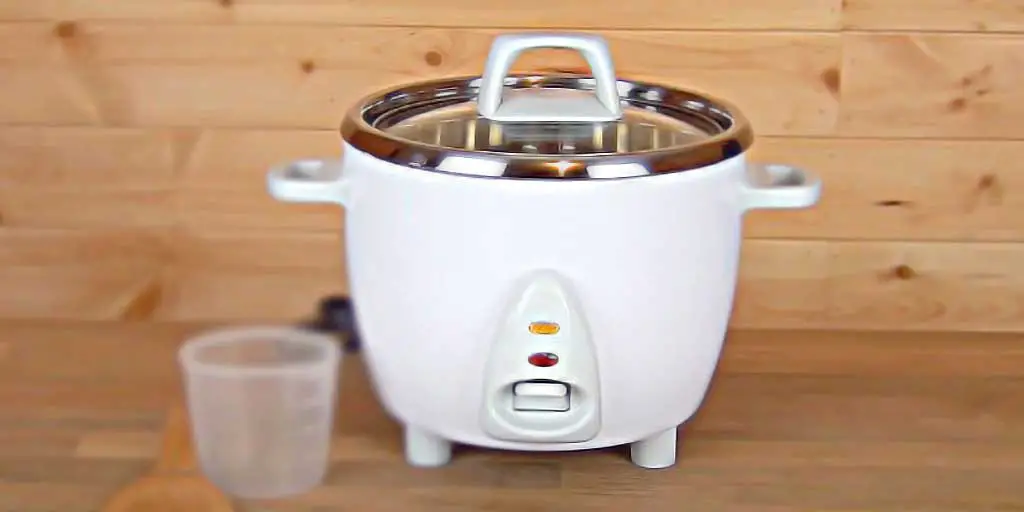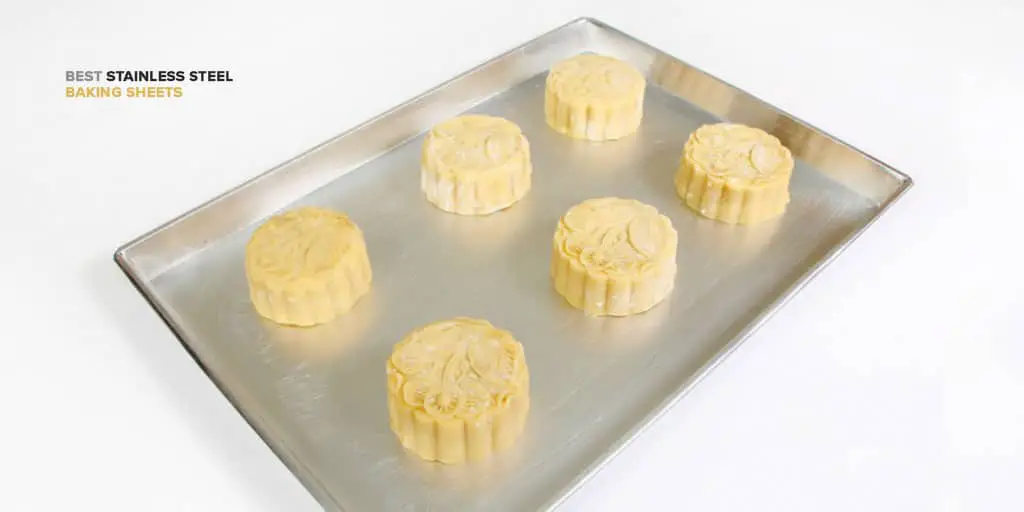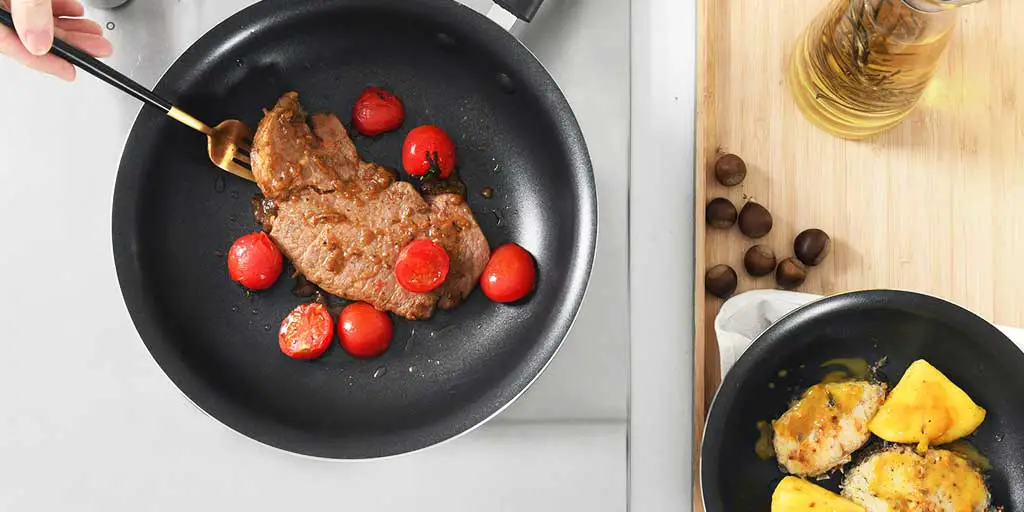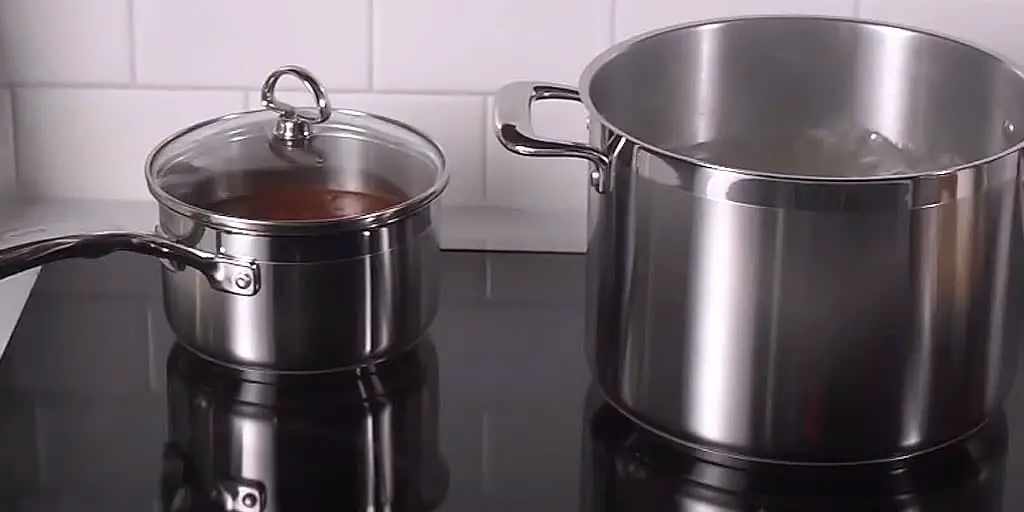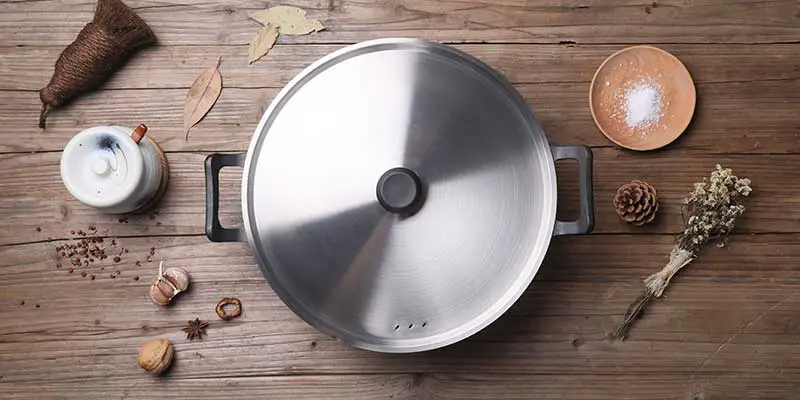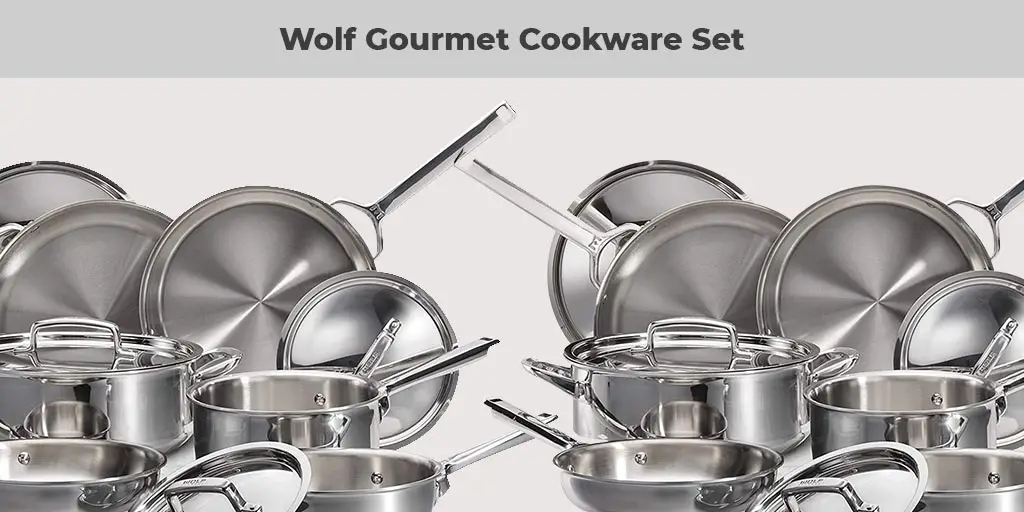How to Cook with Cast Iron Skillet: A Step By Step Guide
Yes, non-stick cook pans are great! Technically speaking, though, it is also a very recent invention. Presented to the world around the second half of the 20th century to be exact.
Then what did people used to cook their food with before? The answer, of course, is cast iron skillets. And why no, though? Using a cast iron skillet, you can basically cook any number of dishes using numerous kinds of techniques.
Moreover, they are super damage resistant with a legendary level of durability. Incredulous to admit, a well cared for skillet can run in the family serving generations. Intrigued to know more about this thing?
Just read on!
Contents
How to Cook with Cast Iron
One of the first things to do when you come across an iron skillet is to season it. But before doing so, I think it’s best to explain why “seasoning” is a must for the device in the first place.

Although cast irons are often cited as the original non-stick cookware, however in practice the slippery surface is not a natural phenomenon. Rather some manually work is in due to make it so. Thus the term “seasoning” comes to rescue.
Seasoning is the method by which natural oil is strongly bonded to the skillet’s surface, thereby producing its glossy non-stick layer. Needless to say, without this layer, cooking foods over skillets or pan would indeed pose to be a herculean feat.
The Seasoning Process
With the importance emphasized, given below are the steps to season a cast iron skillet effectively.
Step 1: Whether you have a new or rusted old up skillet at hand, the first step is to wash it.
Step 2: Take a soft scrubber for a new skillet or steel wool to remove rust using the mild dishwasher with hot or cold water.
Step 3: Once done with cleaning, towel dry the skillet and place it over the stove. Turn the heat up to hasten the drying process thoroughly. Once completely dry, turn off the heat.
Step 4: Allow the skillet time to cool off.
Step 5: Take a clean paper towel or brush and then spread a thin layer of oil. The aim is to apply a uniform layer that is not drenched in oil too much or too little.
Step 6: Don’t just apply oil to the surface alone, rather oil the whole skillet. That is, the surface, bottoms, sides, handle, etc. This will later help form an even surface layer.
Step 7: As for the oil type, any kind of cooking oil will do sunflower, canola, palm, coconut flaxseed, etc.
Step 8: Flaxseed oil is considered the best in creating a long-lasting non-stick layer as it dries and binds itself to the skillet surface the hardest. But it is an expensive oil to buy.
Step 9: Then put the oiled-up skillet into the oven upside down. Set the temperature to the highest, possibly 450°C -500°C and then leave it for over an hour.
Step 10: High temperatures force the oil to burn up and form a thin plastic-like coat. The heat further facilitates this coat to bond with the iron resulting. This causes the pan to achieve its non-stick property.
Step 11: With time served. Turn off the oven and allow the skillet to cool down to room temperatures. This officially draws the end to the seasoning process.
Step 12: Although you can repeat the process from step 3-8 a few more times to add more layers and set up a strong non-stick base.
Step 13: Likewise, it never harms to season new and pre-coated skillet it once more!
Cooking the Food
With the skillet ready to rule the kitchen, it’s now time to put the show on the road.
Step 1: Always pre-heat the skillet over medium temperature before starting to cook. This is important as the skillet has a porous surface. Meaning food will stick to these tiny pores if they are not uniformly heated to close off completely. Never put cold food directly on the preheated skillet, as this makes the food to stick due to temperature discrepancies.
Step 2: Thaw foods close to room temperature before cooking.
Step 3: Using a skillet, you can use any number of ways to cook your foods. From searing, sauté, baking (you can directly put it in the oven), braising, to deep or shallow frying, etc. One of the golden rules to follow when cooking in a skillet is never to move around the food too much. With this being especially true for searing meats.
Step 4: When searing, allow the meat to cook on its own time. Once in a while, without touching, look to see if a brown layer has appeared or not. For that is your indication to flip sides without fearing undone stickiness.
The Cleaning Regime
There is not much when it comes to cleaning skillet. Just follow these simple rules:
- After cooking, leave the skillet to come down to a lukewarm temperature
- Don’t allow it to cool too much as the deposits may stubbornly stick
- Using a kitchen towel, wipe out the residues
- Scatter some salt over the skillet
- Use the rough side of a cleaning pad (non-metal) to wipe the salt over the surface
- Salt acts a natural abrasive in scrubbing off sticky remnants. More importantly, it causes absolutely no harm to the season
- Rinse the skillet with lukewarm or normal water and then towel dry
- To dry completely put it on a stove to evaporate the moisture
- Use a brush or paper towel to apply a thin layer of oil
- Raise up the heat and smoke the oil for 5-10 minutes. This step will help later to avoid rancidity
- Allow it to cool before storing it in dry cabinet space
Final Words
Considering the weight and maintenance, some of you may label the iron cast as a difficult device. But once you get the hang of it, I highly promise that there is absolutely no turning back!
So go on! Give it a try.
FAQs
Do you put oil in a cast iron skillet when cooking?
You don’t have to use oil in a cast iron skillet when cooking. It’s just for pre-seasoning the pan if it is not already seasoned and you will be preparing fried foods, egg dishes, or gravies. The grease from these foods will seep into the pores of the metal and form a coating that resists food sticking or burning. When you’re done cooking food in your cast iron pan with vegetable oil, wash it out with water and wipe down with paper towel to remove any excess oils. Your pan is now ready for its next round of use!
What foods should you not cook in cast iron?
Cast-iron pans are a staple for many people, but it is important to remember that this metal can react differently with different ingredients. It is usually best to avoid cooking acidic or alkaline dishes like tomato sauce, rice pilaf, and pasta sauce on your stovetop since the acid may dissolve any seasoning from previous cooks and leave an unpleasant taste behind.
Is it OK to use olive oil on cast iron?
Many people believe that if you use olive oil on your cast iron, it will make it more slippery. This isn’t true! Olive oil is a great way to shine up and seal the surface of your favorite pan. However, there are many other things out there with higher smoke points than olive oils. So be sure not to cook too high for long periods of time in any type of vegetable based product like bacon grease or canola!
Is cast iron The best way to cook steak?
Cast iron is a great way to cook steak. Cast Iron skillets have been the standard for cooking food for decades, and for good reason. They retain heat well; they are durable; they distribute heat evenly, which means that food cooks faster than it would in a pan without even heating ones self.
